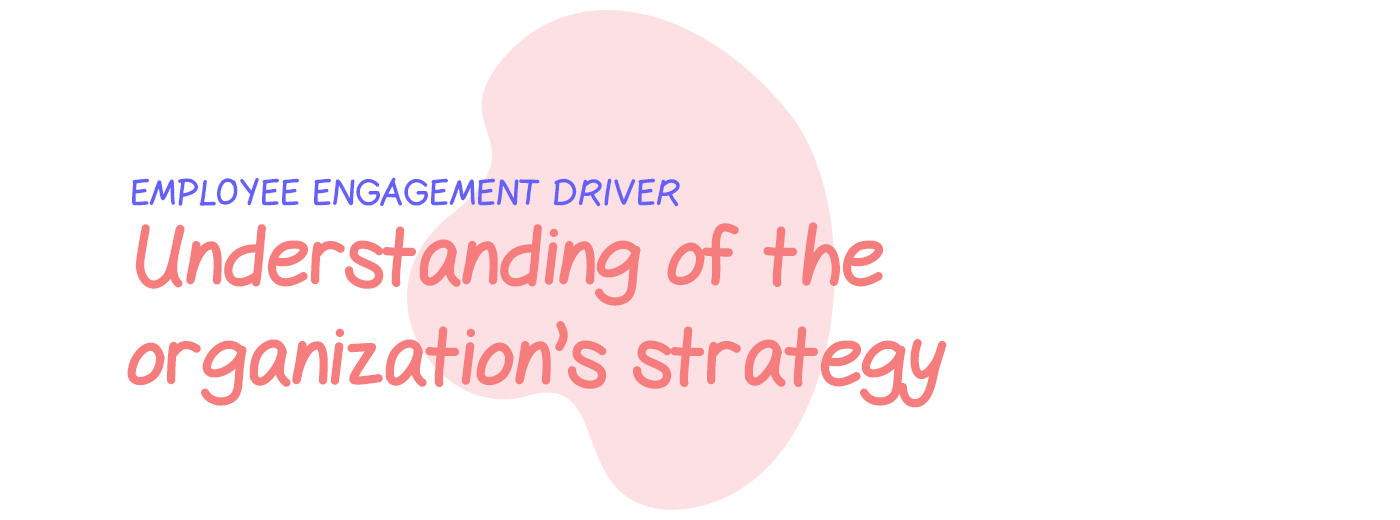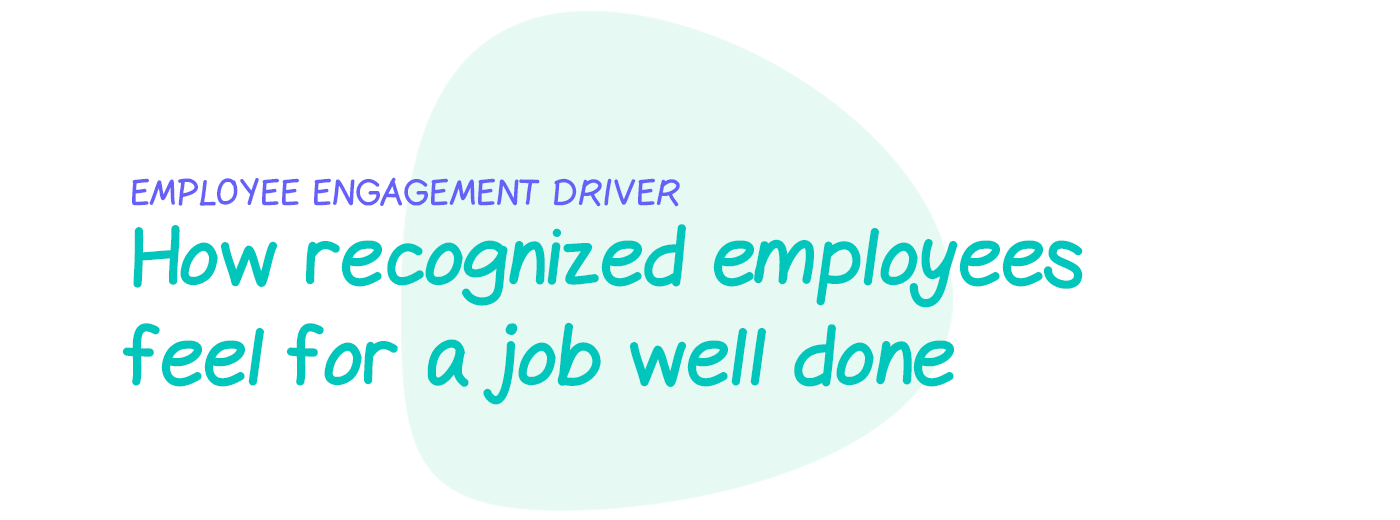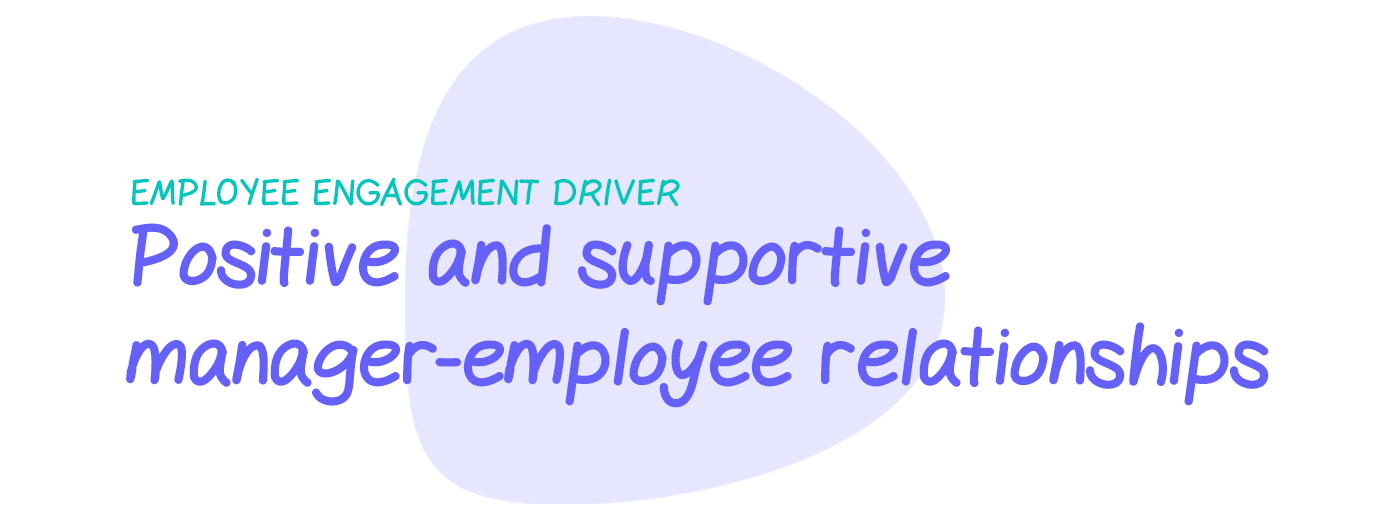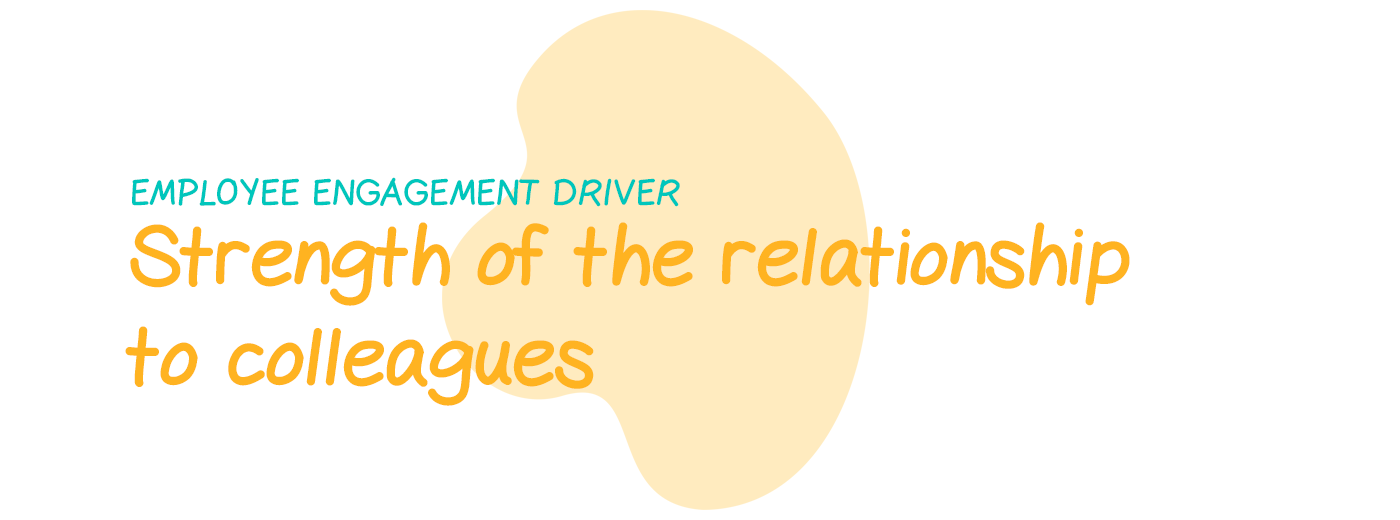If you’re an HR leader, you’re constantly thinking about engagement. Your objective is to figure out how to get the best results out of your workforce, and studies show that highly engaged employees produce the best work.
But there’s no way you can speak to employees one by one. You’d never finish any other work and given the scale of such a project, the conversations wouldn’t be that rich.
Instead, there are several strategies and tools you can use to measure employee engagement.
In this article you will find:
Why you should measure engagement?
You don’t need to tell upper management that employee engagement is important.
They know that it is.
What they don’t know is how to interpret data, and then turn that data into concrete actions.
Scoring an average of 70% for “satisfaction with professional growth” doesn’t mean much on its own. It may seem good. But if last year’s average score was 90%, you know you’ve got a problem.
This is why it’s important to measure frequently to establish trends. Measuring employee engagement once a year or once every two years isn’t enough. You need to understand changes in employee engagement from one period to the next.
Think about it this way.
You wouldn’t measure your sales metrics once a year. You wouldn’t even measure them twice a year. You measure them per sales period or per financial quarter. The same logic should be applied to measuring employee engagement.
Why? Because what gets measured gets managed.
Best way to measure employee engagement
The best approaches are proactive. This is why the best way to measure employee engagement is through engagement surveys.
Annual employee engagement surveys and pulse surveys identify problems before people want to leave, and can easily be scaled to the whole organisation.
Annual engagement surveys
A popular format for gauging employee engagement, these surveys are distributed once a year.
They are a useful way to get a macro, data-driven understanding of your employee engagement.
Annual engagement surveys also provide a benchmark that you can reference during your efforts to increase employee engagement. These are rather long and can take employees up to 20 minutes to complete.
Pulse surveys
These smaller surveys are distributed more frequently and used to get a real-time view of how employees are feeling.
They can be distributed on a quarterly, monthly, or even weekly basis.
By regularly asking specific questions aimed at measuring employee engagement drivers, you can obtain a holistic view of your employee engagement.
This will let you know where to focus your efforts to have the biggest impact on your workforce's engagement.
You can also use pulse surveys to track engagement progress through time or compare your pulse survey results to your employee survey results to gauge how much progress you’ve made since identifying goals for improvement.
Important: If you conduct an employee engagement survey, you need to be ready to act. There’s nothing worse than asking your employees for their opinion and not doing anything with their feedback. Make sure that your managers are ready to act before starting the survey process.
Employee Net Promoter Score (eNPS)
Employee Net Promoter Score (eNPS) is based on the Net Promoter Score (NPS), which was developed to measure customer loyalty.
eNPS assess employee loyalty by asking the following question:
How likely are you to recommend this company as a great place to work?
Employees respond anonymously on a sliding scale of 1-10 with 1 meaning they're highly unlikely to recommend the company and 10 meaning they're very likely to recommend it.
Based on their responses, employees are classified into three categories: detractors (0-6 scores), passives (7-8), and promoters (9 and 10).
Detractors are the employees who would not recommend working for the organization to somebody else, while promoters are the biggest supporter of the company.
While this eNPS doesn’t explain why employees don't recommend your organization, it does an excellent job of producing a snapshot of how dedicated your workers are.
eNPS assessment can easily be done through annual surveys or pulse surveys.
Employee engagement isn't something that you build and then stop working on.
You have to be in constant communication with your employees to make sure their expectations are met and they're currently happy at your organization.
This is especially true during times of change.
Here's how we can help you improve employee engagement:
Our platform automatically surveys your employees at regular intervals (70% of our clients opt for monthly surveys).
These surveys include questions directly related to engagement, as well as professional growth, relationship with manager and peers, and accomplishment (all of which are clear indicators of engagement at both the team and organizational level).
Sparkbay then gathers the responses and, for each category, gives team managers and HR leaders a clear report with a score out of 10.
With the help of these reports, you’re able to track employee engagement in real-time, and understand your top improvement opportunities.
You can also segment your data based on manager, department, tenure and more, or benchmark yourself against companies in the same industry as yours using our proprietary dataset.
We also created a library of easy-to-implement actions from the most successful organizations to help you and your team managers learn and improve.
It’s a great way to build a culture of constant improvement, and give employees a voice that gets heard and acted on.
If you're interested in learning how Sparkbay can help you measure employee engagement, you can click here for a demo.
How to measure employee engagement without survey?
If you aren't ready for engagement surveys, you can use the following methods. Keep in mind that these methods are more hands-on and time-intensive than engagement surveys and may require a significant contribution from the HR department.
1-On-1s
Individual meetings with employees are another way for you to measure employee engagement. Having an informal chat regularly scheduled with your team provides a real sense of what's happening. The advantage of these hour-long meetings is that it's in person, and because it's safe and confidential, employees are more likely to share detailed feedback about possible issues. Ensuring your employees feel confident and removing that fear and nervousness is a great way to get them to open up to you.
Stay interviews
Most organizations conduct exit interviews, but an idea that should be done more often are stay interviews.
Instead of waiting until after an employee resigns to ask why they’re unhappy, stay interviews try to get a conversation going before an employee even considers leaving.
The aim is to learn what makes employees remain with the organization (what you’re already doing well) and how you can improve employee engagement.
Voluntary employee turnover rate
Voluntary turnover occurs when an employee leaves a company on their own. Most of the time, turnover is a bad thing, and a high turnover rate equals low levels of employee engagement.
The turnover rate measures how many employees are leaving your organization over a defined period of time.

You need the following information to calculate your turnover rate:
- Average number of employees during the year (E)
- Departures during the year (D)
The average number of employees during the year (E) can be calculated by adding the number of employees at the start of the year to the number of employees at the end of the year, then dividing the sum by two.
Then divide the number of employees who left the company (D) by the average number of employees during the year (E) and multiply this by 100 to get the annual employee turnover rate.
Employee Absenteeism Rate
Absenteeism occurs when employees regularly fail to show up for work. Absenteeism is a red flag for employee disengagement.
This metric measures what percentage of employees were absent over a period of time. A high employee absenteeism rate indicates a high levels of employee disengagement.

To calculate the absenteeism rate, you need the following numbers:
- Days of absences (A)
- Total workdays for the period (W)
Then you divide days of absence (A) by the number of workdays (W) and multiply by 100.
What drivers of employee engagement you should measure
To help you get started, we’ve listed 8 engagement metrics (or drivers) your employee engagement surveys should track and why they’re important

Alignment with your organization’s strategy
Do your employees understand your company’s strategy?
Managing every single move of knowledge workers is impossible. So if they have a solid grasp on the organization’s strategic roadmap, they can make day-to-day decisions that are aligned.
Industrial-organizational (I/0) psychology researchers refer to workers who understand and honor the company’s strategy as “embedded” employees. These are some of the most engaged employees.
So how can organizations increase the number of engaged employees?
One strategy is to ditch the cascade method of communication.
Traditionally, senior management communicates important information to their direct reports with the understanding that they’ll pass the details on to their team. Studies suggest that this may not be the most effective way to communicate company values.
Instead, senior business leaders should communicate directly to the workforce through emails and townhall-style conversations where employees have an opportunity to engage and ask questions.

How recognized employees feel for a job well done
Appreciation is an important part of any company’s culture.
When an employee goes beyond the black and white requirements of their contract, appreciation from managers reinforces that behavior and makes it worthwhile.
Otherwise, an employee will question why they’re putting in so much effort.
To ensure workers stay engaged — and that they remain with the company — business leaders have formalized workplace appreciation into employee recognition programs.
Employee recognition programs have a demonstrably positive impact.
Productivity, engagement, and performance levels in companies with recognition programs trump companies without recognition programs by 14%.
In turn, a 15% increase in employee engagement levels can cause a 2% increase in profit margins.
What’s more, Deloitte’s Talent 2026 Survey found that recognition is among the top three most effective non-financial methods of retention.
Employee recognition is also important due to the changing work landscape.
This makes employee recognition programs more and more important for engaging and retaining employees.
Opportunities for personal and professional growth
Technology is evolving at a rapid pace. This is disrupting standard procedures in organizations.
Companies no longer have a firm understanding of future needs, so it’s harder to design linear career paths.
Instead, they need to quickly pivot every few years to hire employees who possess a set of skills that weren’t even on the radar a couple years back.
Ambitious, proactive employees are not content to rest on their laurels.
They want to “future proof” their careers by equipping themselves with skills in the latest technologies.
A company that provides internal development opportunities demonstrates to its employees that they’re thinking about their long-term career progression and job security.
Plus, they can show how these learning opportunities tie into career opportunities. For instance, a specific management program may be one way individual contributors can move into team lead roles.

Positive and supportive manager-employee relationships
Did you know that your company’s growth is tied to the quality of your managers?
This is according to a decade’s worth of employee engagmeent research at Gallup. In fact, the study showed that it accounted for up to 70% of the variance in productivity and engagement levels.
If you’re trying to build a winning organization, hiring great managers means most of your work is done.
Great managers learn about their team’s goals and ambitions and what’s important to them outside of work. In fact, employee engagement research shows that managers who get to know their team members on a personal level help prevent toxic work environments.
They do this by practicing what industrial-organizational psychology researchers at San Diego State University call “ethical leadership”. This is a form of management that prioritizes two-way communication, providing positive reinforcement, and serving as a source of emotional support.
The presence of supportive managers affects your culture and employee engagement, so it’s worth checking in to see how supported your employees feel.

Strength of the relationship to colleagues
When an employee has a positive relationship with colleagues, they’re seven times more likely to feel engaged at work.
Any job has its ups and downs, but having a supportive group of colleagues to turn to helps employees stick it through.
They are also a trusted sounding board for employees embarking on an exciting project, preparing for a challenging conversation with their manager, or navigating a challenging assignment.
Meaningful relationships are a critical component of employee engagement, but they take time to cultivate. With most of an employee’s time spent on work, it’s only natural that their level of engagement will correlate to the quality of the relationships they have at work.
Sparkbay allows us to get honest employee feedback. The insights we get around employee engagement enable us to be more proactive and fuel quality conversations.
How Exegy® used a data-driven approach to improve engagement with Sparkbay

Level of autonomy
Did you know leaving your employees alone may actually be a good idea?
It goes against all the traditional notions of workplace dynamics. It’s expected that a supervisor or manager keeps a close eye on workers to ensure they complete a certain amount of work in a specific amount of time.
Today’s workplaces are much different. Two people in the same role, particularly knowledge workers, may not get things done in the same way.
One may prefer to work with limited interference from their manager.
Another may enjoy the social aspect of the workplace and seek frequent touchpoints with their team lead.
Generally speaking, employees should be able to have control over their day-to-day work so long as it’s aligned with the larger strategy and key information is communicated. When employees have this freedom to use their judgement and expertise, they have what’s known as worker autonomy.
Workers with sufficient autonomy are more engaged, committed, and productive in their roles. They appreciate the fact that they’re trusted to complete deliverables on their terms.
On the flip side, leaders who are overly critical, untrusting, and commanding undermine a worker’s sense of autonomy. Employees feel less ownership over their work and undervalued as a contributor. As a result, their engagement levels and sense of loyalty decrease.

Sense of accomplishment
Do your employees feel a sense of accomplishment at work? According to Robert Half, it’s the most important factor that drives engagement in employees under 35.
From where do employees derive a sense of accomplishment?
Usually by accomplishing goals that have been clearly articulated by their manager and that are aligned with larger company goals.
Of course, it’s not enough to simply assign tasks. These tasks must have specific incentives assigned to them or play a meaningful role in an employee’s overall career progression.
Projects and big assignments are not the only way to instill a sense of accomplishment. Offering training opportunities can also help by giving employees a chance to level up and develop their skills.
At the end of the day, you want that professional stimulation and validation to come from your organization, so people don’t look for it elsewhere.

Compensation
Calculating compensation is a tricky activity. One the one hand, you have to take the market and your projected growth into consideration.
On the other hand, your employees’ salaries dictate a big part of their lives. If they don’t earn enough money to feel stable and secure, this impacts their productivity.
Plus, it determines how engaged they are to the organization.
If their salary is too low, your company may just be something to hold them over until they find something better.
Use your annual employee engagement survey to directly ask employees whether they’re happy with their salary. People are more honest than you’d think.
A low salary and infrequent raises signals to employees that their job is undervalued. The most proactive employees - the ones you want to keep - will find a way to raise their salary. And as we discussed earlier, the fastest way to get a raise is to find a new job.
In some cases, keeping salaries low is an example of being a penny wise and a pound foolish. You save money in the short term, but you may wind up spending more to recruit new workers if turnover becomes too high.
Track the right metrics, so you know where to devote your employee engagement efforts
When companies measure employee engagement, they tend to get back more than they give.
Asking the right questions ensures your work as an HR leader is as impactful as possible. Instead of starting “one-size-fits-all” employee engagement projects, you can launch focused, data-driven initiatives that focus on the most urgent areas for improvement within your company.
If you're interested in learning how Sparkbay can help you measure employee engagement, you can click here for a demo.

